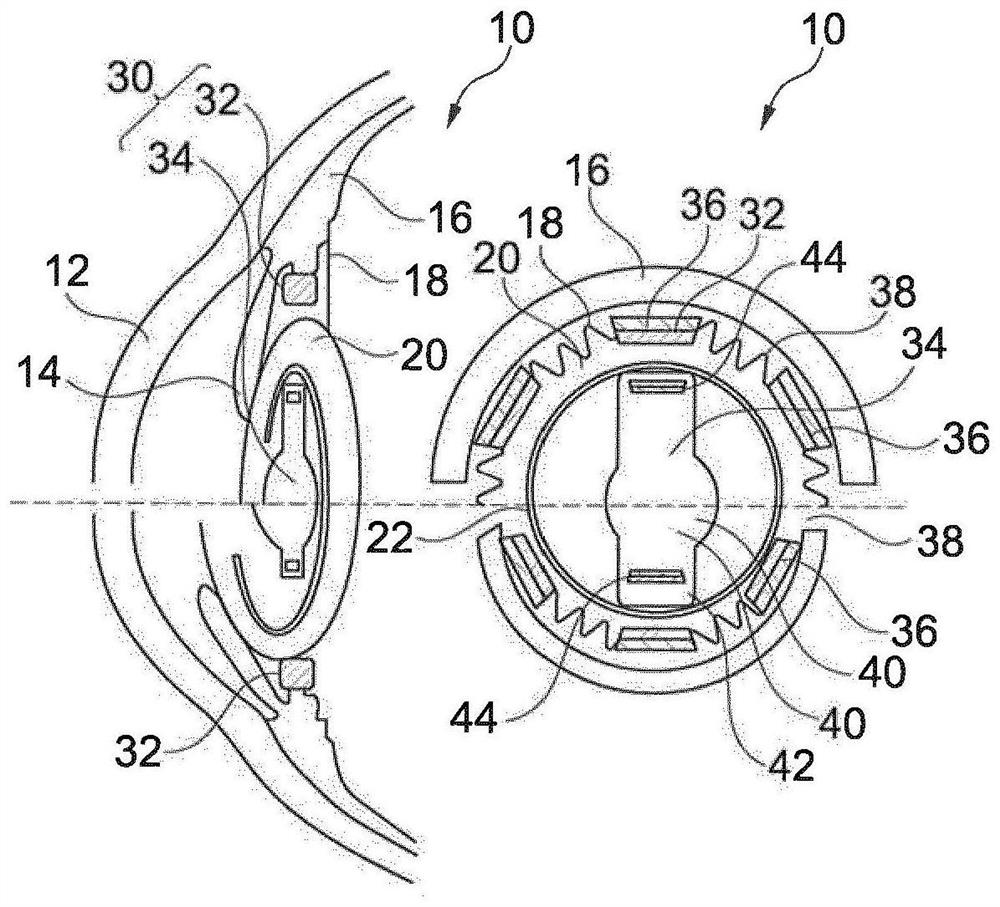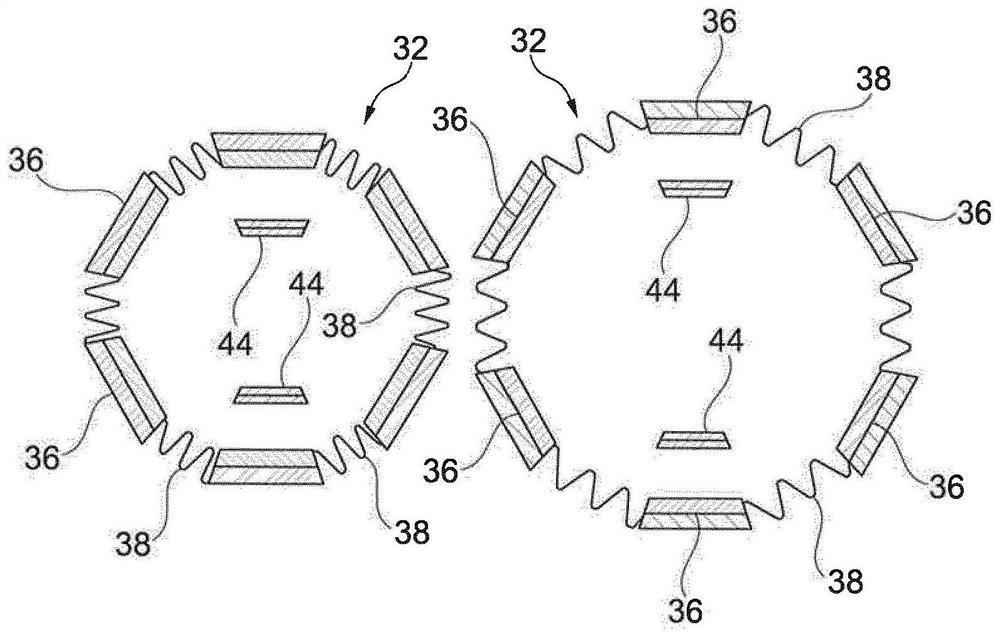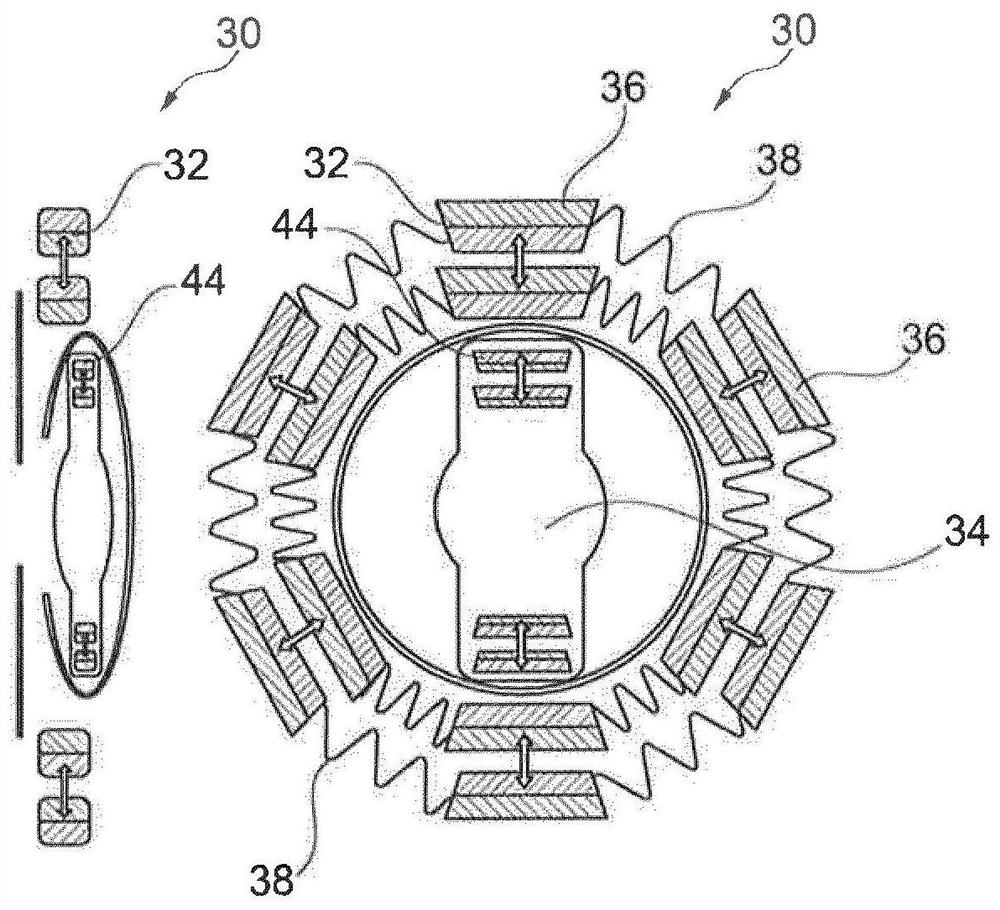Intraocular lens system, intraocular lens and ciliary body implant
A technology for intraocular lens and ciliary body, which is applied in the field of intraocular lens and ophthalmic surgery, and can solve the problems of large volume, small incision size, and unmeasurable properties of biomaterials
- Summary
- Abstract
- Description
- Claims
- Application Information
AI Technical Summary
Problems solved by technology
Method used
Image
Examples
Embodiment Construction
[0048] figure 1 A schematic view of an eye 10 with an implanted intraocular lens system 30 (IOL system) according to a preferred embodiment is shown in a longitudinal section along a section plane (left) and a cross-sectional view perpendicular to the optical axis 100 (right). side), wherein the optical axis 100 of the eye 10 extends in said cross-sectional plane.
[0049] The cornea 12 and iris 14 of the eye 10 are identified from the longitudinal cross-sectional view of the eye 10, along with the underlying ciliary body 16, ribbon fibers 18 and empty capsular bag 22, and where the natural lens 20 is disposed, but all The natural lens has been removed from the eye in the described embodiment.
[0050] figure 1 Also vertically bisected, wherein the upper part of the longitudinal and cross-sectional views respectively shows the eye 10 in the first accommodation state and the lower part shows the eye in the second accommodation state 10. For example, the state shown in the u...
PUM
 Login to View More
Login to View More Abstract
Description
Claims
Application Information
 Login to View More
Login to View More - R&D
- Intellectual Property
- Life Sciences
- Materials
- Tech Scout
- Unparalleled Data Quality
- Higher Quality Content
- 60% Fewer Hallucinations
Browse by: Latest US Patents, China's latest patents, Technical Efficacy Thesaurus, Application Domain, Technology Topic, Popular Technical Reports.
© 2025 PatSnap. All rights reserved.Legal|Privacy policy|Modern Slavery Act Transparency Statement|Sitemap|About US| Contact US: help@patsnap.com



